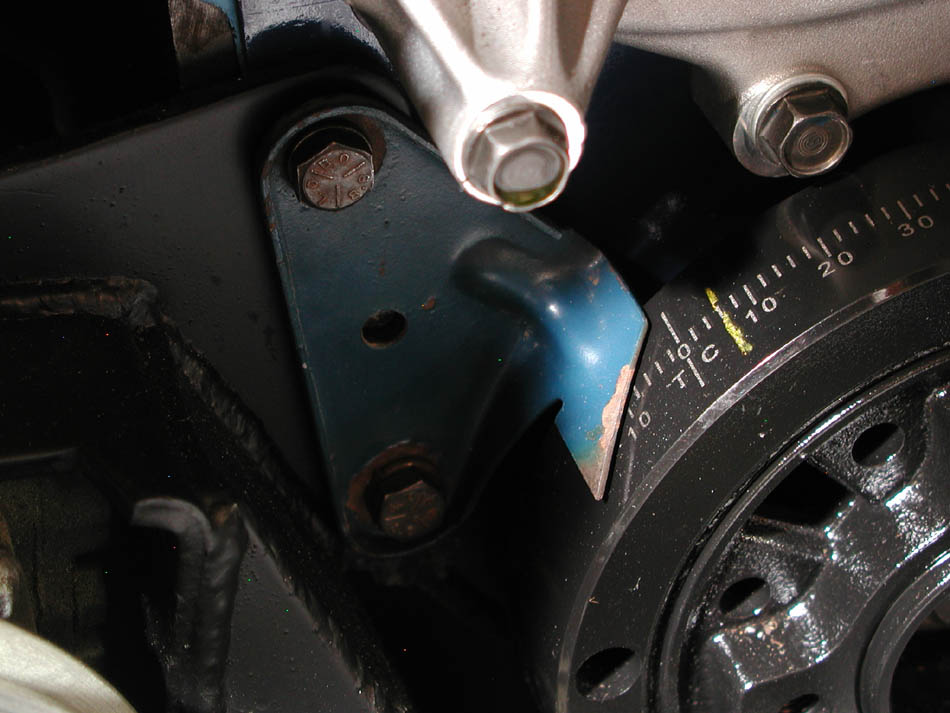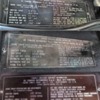quote:
Originally posted by Belgiumbarry:
quote:
Originally posted by PanteraDoug:
quote:
Originally posted by Belgiumbarry:
got the new dizzy today and installed.Perfect , 14 ° idle, 36 at 3300 revs. So i could go 16/38 ??
The new one has a different advance mechanic and the max is to be installed with some plastic keys marked the wanted ° .There was no kit keys/springs included so i kept the fabricators choice.My old one hasn't that , the max to be installed with the plate out of the distributor.
So Mallory has improved it in the years

Installing was not a direct hit...think it's the tolerance with the allen key shape oil pump drive shaft.I tryed a key in them, old one had some play , new one was rather difficult to get in.... but i managed with some patience and push....

me happy !
38 degrees is a lot of advance these days with the current pump gas.
36 should be maximum and even 34 or 35 would still be ok with total advance.
Most of the Clevelands are more responsive with about 16 degrees initial advance.
Depending on what you have for ignition besides the distributor, the engine can be difficult for the battery to turn the engine over fast enough for it to start.
There are ignition controllers like the Ford Duraspark and the Pantera-Electronics ignition that both retard the ignition when turning the engine over to start to make it easier to start.
I am happy for you that the basic issue has been corrected.
thanks ! so i keep it just under 36°. Must have a look what i have for ignition besides the distributor... don't know

But even with the initial 26° given by the broken one, starting was perfect ....never a problem.Yes, after long parking ( weeks) i must start a few times and pedal-pump the gas ... but from there just touching the key and the engine spins.
Ok, let's have a look what's more in there ...
I would limit total to 35-36 and set initial (without vacuum connected) to 15-16 and leave it at that.
Clevelands really shouldn't be set with a timing light though, just checked to see what the final setting was and recorded.
The timing should be set with a vacuum gauge. You should keep advancing the distributor until the engine rpm stops rising, set it there, readjust the idle set screw on the carburetor down, then go back and see what the timing light says it is. Usually that will be around 16.
Make sure the choke is fully off when you do that also.
Panteras are just a pain to do this to because of the location of the distributor. Such is life.
You probably have the CJ engine with the open chamber heads and dished pitons.
It is the high compression engines, around 11:1 or so that have issues re-starting when they are hot because of the initial advance.
Sometimes the cable to the starter gets so hot you will see it smoking.
I doubt that Shelby's people did anything with that engine at all except pull it out and install the Dodge engine in it. Then put the original stock engine back in it when they were done playing around with it.
It's probably all stock from Detomaso in that respect?
The Pantera-Electronics ignition is a worthwhile upgrade. It will fire fouled plugs and as a result give the engine the opportunity to clean them up, it gives you a noticeably hotter spark than the MSD 6a does, it retards the ignition when the engine is trying to start to make it easier, it shuts off the A/C compressor then also. It runs a box coil and gets rid of the coil in a can which is a big improvement also.
There are a bunch of ancillary benefits with it as well.
Works with any distributor.
Keep an eye out for changes in the ignition performance with the new Mallory distributor. They are still prone to advance spring failure like just occurred with the old one.
Now you know the symptoms to look for?







